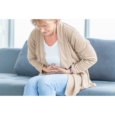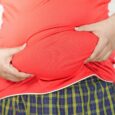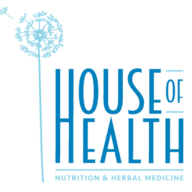
Have you ever wondered about the connection between your body’s 28 day menstrual cycle and the phases of the moon?
Here’s the theory: In the days before electricity, women’s bodies were influenced by the amount of moonlight we saw. Just as sunlight and moonlight affect plants and animals, our hormones were triggered by levels of moonlight. And, all women cycled together. Today, with artificial light everywhere, day and night, our cycles no longer correspond to the moon.
This article is dedicated to exploring the menstrual cycle: fact and fiction, then and now.
- Who first told you?
- What did they call it?
- How is menstruation viewed by your culture?
- What taboos have influenced you?
- How does your partner feel about your period?
- What impact has advertising had on your knowledge and attitude?
- What is the motivation of the advertiser?
- Is your experience different now compared to earlier in your life?
Basic Biology
The cycle begins when a baby girl is born, she has all the eggs her body will ever use, and many more, perhaps as many as 450,000? They are stored in her ovaries, each inside its own sac called a follicle. As she matures into puberty, her body begins producing various hormones that cause the eggs to mature. This is the beginning of her first cycle; it’s a cycle that will repeat throughout her life until the end of menopause.
Let’s start with the hypothalamus – a gland in the brain responsible for regulating the body’s thirst, hunger, sleep patterns, libido and endocrine functions. It releases the chemical messenger to tell the pituitary gland (also in the brain), to do its job, which is to secrete Follicle Stimulating Hormone (FSH) and a little Luteinizing Hormone (LH) into the bloodstream. This cause the follicles to begin to mature.
The maturing follicles then release another hormone, oestrogen. As the follicles ripen over a period of about seven days, they secrete more and more oestrogen into the bloodstream. Oestrogen causes the lining of the uterus to thicken. It causes the cervical mucous to change. When the oestrogen level reaches a certain point it causes the hypothalmus to release more hormones to stimulate the pituitary to release a large amount of Luteinizing Hormone (LH). This “surge” of LH triggers the most mature follicle to burst open and release an egg – – – This is ovulation. [Many birth control pills work by blocking this LH surge, thus inhibiting the release of an egg.]
Ovulation
As ovulation approaches, the blood supply to the ovary increases and the ligaments contract, pulling the ovary closer to the Fallopian tube, allowing the egg, once released, to find its way into the tube. Just before ovulation, a woman’s cervix secretes an abundance of clear “fertile mucous” which is characteristically stretchy. Fertile mucous helps facilitate the sperm’s movement toward the egg. Some women use daily mucous monitoring to determine when they are most likely to become pregnant. Mid-cycle, some women also experience cramping or other sensations. Basal body temperature rises right after ovulation and stays higher by about 1 degree C until a few days before the next period.
Inside the Fallopian tube, the egg is carried along by tiny, hairlike projections, called “cilia” toward the uterus. Fertilization occurs if sperm are present. [A tubal pregnancy, called ectopic pregnancy, is the rare situation when a fertilized egg implants or gets lodged inside the Fallopian tube. It is a dangerous life-threatening situation if the fertilized egg starts developing and growing into an embryo inside the tube. The tube will rupture causing internal bleeding and surgery is required. If the pregnancy is discovered before the tube ruptures, medication (such as Methotrexate) can be used to stop the development of the embryo.]
A woman can use a thermometer and assessing her mucous to monitor her own ovulation and use this information to avoid or encourage a pregnancy. This is the all-natural fertility awareness method of family planning.
Uterine Changes
Between midcycle and menstruation, the follicle from which the egg burst becomes the corpus luteum (yellow body). As it heals, it produces the hormones oestrogen and, in larger amounts, progesterone which is necessary for the maintenance of a pregnancy. In the later stages of healing, if the uterus is not pregnant, the follicle shrinks, turns white and is called the corpus albicans.
Oestrogen and progesterone are sometimes called “female” hormones, but both men and women have them, just in different concentrations.
Progesterone causes the surface of the uterine lining, the endometrium, to become covered with mucous, secreted from glands within the lining itself. If fertilization and implantation do not occur, the spiral arteries of the lining close off, stopping blood flow to the surface of the lining. The blood pools into “venous lakes” which, once full, burst and, with the endometrial lining, form the menstrual flow. Most periods last 4 to 8 days but this length varies over the course of a lifetime.
Bleeding – A New Theory
Some researchers view menses as the natural monthly cleansing of the uterus and vagina of sperm and bacteria they carried.
Cramps and Other Sensations
Women can experience a variety of sensations before, during or after their menses. Commonly called PMS, complaints include backache, pain in the inner thighs, bloating, nausea, diarrhoea, constipation, headaches, breast tenderness, irritability, and other mood changes. None of these are necessary to cope with – most can be eliminated or alleviated by nutritional and/or herbal intervention. Some women experience positive sensations such as relief, release, euphoria, new beginning, invigoration, connection with nature, creative energy, exhilaration, increased sex drive and more intense orgasms.
Uterine cramping is one of the most common uncomfortable sensations women may have during menstruation. There are two kinds of cramping. Spasmodic cramping is probably caused by prostaglandins, chemicals that affect muscle tension. Some prostaglandins cause relaxation, and some cause constriction. A diet high in linoleic and liblenic acids, found in vegetables and fish, increases the prostaglandins for aiding muscle relaxation. Some other specific supplements may be helpful as well, depending on what other symptoms are present.
Congestive cramping causes the body to retain fluids and salt. Things that may help counter congestive cramping, include avoiding wheat and dairy products, alcohol, caffeine, and refined sugar.
Natural options to alleviate cramping:
- Increase exercise. This will improve blood and oxygen circulation throughout the body, including the pelvis.
- Try not using tampons. Many women find tampons increase cramping. Don’t select an IUD (intrauterine device) as your birth control method.
- Avoid red meat, refined sugars, milk, and fatty foods.
- Eat lots of fresh vegetables, whole grains (especially if you experience constipation or indigestion), nuts, seeds and fruit.
- Avoid caffeine. It constricts blood vessels and increases tension.
- Meditate, get a massage.
- Have an orgasm (alone or with a partner).
- Drink ginger root tea (especially if you experience fatigue).
- Put cayenne pepper or ginger on food. Both are vasodilators and improve circulation.
- Breathe deeply, relax, notice where you hold tension in your body and let it go.
- Take time for yourself!
Anecdotal information suggests eliminating Nutra-Sweet or other Aspartame-containing foods from the diet will significantly relieve menstrual cramps. If you drink sugar-free soft drinks, try eliminating them completely for two months and see what happens.
Lifestyle
The hormones in our bodies are especially sensitive to diet and nutrition. PMS and menstrual cramping are not diseases, but rather, symptoms of poor nutrition.
Premenstrual Syndrome or PMS
PMS has been known by women for many many years. However, within the past 30 or so years, pharmaceutical companies have targeted and created a market to treat this normal part of a woman’s cycle as a disease. These companies then benefit from the sale of drugs and treatments.
Premenstrual syndrome refers to the collection of symptoms or sensations women experience as a result of high hormone levels before, and sometimes during, their periods.
One type of PMS is characterized by anxiety, irritability and mood swings. These feelings are usually relieved with the onset of bleeding. Most likely, this type relates to the balance between oestrogen and progesterone. If oestrogen predominates, anxiety occurs. If there’s more progesterone, depression may be a complaint.
Sugar cravings, fatigue and headaches signify a different type of PMS. In addition to, or instead of, sugar, women may crave chocolate, white bread, white rice, pastries, and noodles. These food cravings may be caused by the increased responsiveness to insulin related to increased hormone levels before menstruation. In this circumstance, women may experience symptoms of low blood sugar; their brains are signaling a need for fuel. A diet that includes lots of vegetables and complex carbohydrates will provide a steady flow of energy to the brain and counter the ups and downs of blood sugar variations. Women with PCOS or diabetes are more prone to sugar cravings.
Stress, mineral and vitamin status and things like how well the liver and bowels are working can determine show severe symptoms are – or even if they exist at all.
Menstrual Myths
- Every woman’s cycle is or should be 28 days long.
- Every woman will or should bleed every month.
- Every woman will or should ovulate every cycle.
- If a woman bleeds, she is not pregnant.
- A woman cannot ovulate or get pregnant while she is menstruating.
The above statements are myths. Every woman is different.
It’s true that most women will have cycles that are around 28 days. But, a woman can be healthy and normal and have just 3 or 4 cycles a year. [However, while variations might be healthy and normal, they could also be a sign of a serious underlying problem. For example, a recent news article suggested that irregular menstrual cycles may predict Type 2 Diabetes .
Ovulation occurs about 14-16 days before women have their period (not 14 days after the start of their period). The second half of the cycle, ovulation to menstruation, is fairly consistently the same length, but the first part changes from person to person and from cycle to cycle. In rare cases, a women may ovulate twice in a month, once from each ovary.
Conception/Fertilization of an egg, can only occur after ovulation. The egg stays alive for about 24 hours once released from the ovary. Sperm can stay alive inside a woman’s body for 3-4 days, but possibly as long as 6-7 days. If a couple has intercourse before or after ovulation occurs, pregnancy can occur, since the live sperm are already inside the woman’s body when ovulation occurs. Thus a woman can become pregnant from intercourse for about 7-10 days in the middle of her cycle.
Fertility Awareness is a birth control method where women monitor their cycles daily to identify ovulation. They are learning to predict ovulation to prevent or encourage pregnancy. It requires training and diligent record keeping.
Women can be pregnant and continue to have periods (often with much reduced menstrual flow) at the same time. There have also been cases where women have gotten pregnant during their menstrual period.
Did You Know?
- Women lose between 20 and 80 mls of blood during a normal menstrual period.
- One in six fertilized eggs naturally results in “miscarriage”, some of which are reabsorbed by the body and the woman is never aware she’s even been pregnant.
- The length of a woman’s menstrual cycle (the number of days from the first day of one period to the first day of the next) is determined by the number of days it takes her ovary to release an egg. Once an egg is released, it is about 14 days until menstruation, for nearly all women.
Alternatives for Handling Menstrual Flow
- Chlorine-free biodegradable 100% cotton tampons recently hit the market in response to environmentally conscious feminists. Studies have shown that organochlorines can be linked to cancer. Women using chlorine-free tampons are not putting chlorine into their bodies, nor are they supporting an industry which produces enormous volumes of industrial waste containing chlorine. If your regular pad or tampon isn’t chlorine-free, write and urge them to make 100% cotton pads and tampons without chlorine.
- Natural sponges from the ocean (not cellulose) are used by some women. They are dampened then inserted directly into the vagina. When full, they are removed, washed with water, and reused. Washable reusable cloth pads are also available.
- The menstrual cap is another reusable alternative. It is similar to the cervical cap, but worn near the vaginal opening in the same place as a tampon. When full, it is simply removed, washed and reinserted. A cervical cap has also been used successfully in this manner.
- Cloth (washable) pads – this is what most women around the word have always used.
To learn more about YOUR OWN cycle, keep a journal or calendar and make note of how you feel, emotionally and physically, thoughts about yourself, your body, your relationships with other cycling women.
Moon Time
Throughout all cultures, the magic of creation resides in the blood women gave forth in apparent harmony with the moon, and which sometimes stayed inside to create a baby. This blood was regarded with reverence: it had mysterious magical powers, was inexplicably shed without pain, and was wholly foreign to male experience. Early menstrual rites were perhaps the first expression of human culture.
Customs and Traditions
- Indians of South American said all humans were made of “moon blood” in the beginning.
- In Mesopotamia, the Great Goddess created people out of clay and infused them with her blood of life. She taught women to form clay dolls and smear them with menstrual blood. Adam translates as bloody clay.
- In Hindu theory, as the Great Mother created the earth, solid matter coalesced into a clot with a crust. Women use this same method to produce new life.
- The Greeks believed the wisdom of man or god was centered in his blood which came from his mother.
- Egyptian pharaohs became divine by ingesting the blood of Isis called sa. Its hieroglyphic sign was the same as the sign of the vulva, a yonic loop like the one on the ankh.
- From the 8th to the 11th centuries, Christian churches refused communion to menstruating women.
- In ancient societies, menstrual blood carried authority, transmitting lineage of the clan or tribe.
- Among the Ashanti, girl children are more prized than boys because a girl is the carrier of the blood.
- Chinese sages called menstrual blood the essence of Mother Earth, the yin principle giving life to all things.
- Some African tribes believed that menstrual blood kept in a covered pot for nine months had the power to turn itself into a baby.
- Easter eggs, classic womb-symbols, were dyed red and laid on graves to strengthen the dead.
- A born-again ceremony from Australia showed the Aborigines linked rebirth with blood of the womb.
Post-menopausal women were often the wisest because they retained their “wise blood.” In the 17th century these old women were constantly persecuted for witch craft because their menstrual blood remained in their veins.
Native American (Lakota):
“Follow your Grandmother Moon. Her illuminating cycles will transform your spirit.”
Begin with the Grandmother Moon at her brightest and most open. This is a time of outward activity and high energy. Sleep where the moonlight touches you. Walk outside where there are no artificial lights. Feel joy and creativity.
As the Grandmother begins to cover her face, begin to withdraw into a quieter, less social place. Move to that inward place that is more about “being” than “doing.” In the dark of the moon, when bleeding, the veil between you and the Great Mystery is the thinnest. Be receptive to visions, insights, intuitions. Go to a quiet separate place such as a Moon Lodge. Later, come out of the dark, a woman with a cleansed body. As the moon returns, come back out into the world, carrying your vision.
Calendars
The Roman Goddess of measurement, numbers, calendars, and record-keeping; derived from the Moon-goddess as the inventor of numerical systems; measurer of time.
It has been shown that calendar consciousness developed first in women because their natural body rhythms corresponded to observations of the moon. Chinese women established a lunar calendar 3000 years ago. Mayan women understood the great Maya calendar was based on menstrual cycles. Romans called the calculation of time menstruation, meaning knowledge of the menses. In Gaelic, menstruation and calendar are the same word.
The lunar calendar’s thirteen 28-day months had four 7-day weeks, marking the new, waxing, full, and waning moons. Thirteen months is 364 days. Pagan traditions describe an annual cycle as a 13 months and a day. Even today, Easter is the first Sunday after the first full moon after the spring equinox. The 13 month calendar also led to pagan reverence for the number 13 and the Christian attempts to demolish it. Generally, the ancient symbols of matriarchy were the night, moon and 13. Patriarchy (under Christianity) honored the day, the sun and 12.
Menopause
Technically menopause is the last menstrual flow of a woman’s life and the climacteric is period of time preceding and following this event. In general usage, menopause refers to the whole process. For most women, menopause occurs between the ages of forty and sixty and takes place over a period lasting anywhere from 6 months up to three years.
The menstrual cycle usually goes through many changes, some slow and some sudden, before stopping altogether.
A woman’s periods may become erratic, closer together, or further apart. She may skip a period or two, or have spotting at other times in her cycle. A common experience is loss of large amounts of blood with a period and passage of large clots. When a woman nears the cessation of her periods, she may not ovulate for one cycle or several cycles. In this case, the endometrium doesn’t receive the chemical message to stop thickening. It grows and grows until its heavy bulk causes a heavy flow.
Signals of menopause include hot flashes or flushes, changes in sleep patterns, headaches or migraines, high energy, high creativity, and/or mood changes. As with PMS, some of these symptoms are hormone imbalances caused by poor nutrition and can be relieved partially or fuly by a customised herbal and/or nutritional program.
Resources
- Menopausal Years: The Wise Woman Way by Susan S. Weed PMS Self-Help Book and Menstrual Cramps by Susan M. Lark, MD
- The Woman’s Encyclopedia of Myths and Secrets by Roberta G. Walker
- Blood, Bread and Roses by Judy Grahn
- The Garden of Fertility: A Guide to Charting your Fertility Signals to Prevent or Achieve Pregnancy — Naturally — and to Gauge your Reproductive Healt h by Katie Singer. This book, published in 2004, describes the changes a woman experiences throughout the menstrual cycle; how to chart your fertility signals (the waking temperature and cervical fluid); how to determine, by fertility charts, when you are fertile and not fertile; how to practice natural birth control that is virtually as effective as the Pill; and when to time intercourse if you want to conceive. It explains how to identify, by your fertility charts, whether you’re ovulating, indicating a propensity for thyroid problems, poly-cystic ovarian syndrome, or miscarriage. It tells how to establish and identify unambiguous infertility while breastfeeding, and how to identify that ovulatory cycles are resuming. See http://www.gardenoffertility.com/ and http://www.katiesinger.com/.
Links & Other Resources
- Read about Male Infertility
- GardenofFertility.com includes several articles about Fertility Awareness, fabulous photos that show the changes the cervix goes through during a menstrual cycle unless a woman’s on the Pill, fertility charts that can be downloaded at no charge, and more.
- Society for Menstrual Cycle Research – a nonprofit organization and multidisciplinary group of women pioneers in understanding the centrality of menstrual cycle research to women’s health.
- Lunar Calendars from Snake and Snake
- Weaving the Red Web – educating women and girls about the positive aspects of menarche, menstruation and menopause.
- Wikipedia on Fertility Awareness
- Fertility Awareness Center
For information about assessing your hormonal status, we offer a comprehensive range of high quality tests. Click here for more information.











